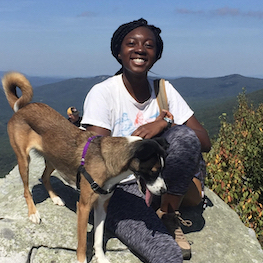Teachable Moments Series

Climate Change & Disease – Encouraging biology students to critique what they read
Open the paper on any given day and you’re likely to read distressing news about climate change. Last week, The New York Times reported that Atlantic hurricanes are growing strong more quickly, and just today The Washington Post reported that the West Antarctic ice sheet is facing unavoidable melting which is likely to produce more rapid sea level rise than previous expected, and that rising temperatures are likely behind the spread of malaria. Also today, I learned that Chevron is doubling-down on fossil fuels by ponying up $53 billion to buy the oil company Hess in what is the the second major merger in the oil industry this month! Who says I have a Cassandra Complex?
The very nature of this news—not to mention its prevalence—poses serious challenges for anyone trying to teach students about climate change and disease. After all, as many have noted, it’s not enough to teach students that the climate change poses an existential crisis, we must give them hope if we want to be effective. And, there is reason to hope. Today’s paper also included a story about Gavin Newsom’s efforts to export California’s Climate laws more broadly. Regardless of what one thinks about the governor, it’s clear that California has been leading on this front. And they are not alone. David Suzuki, using examples from his homeland, Canada, continues to offer many reasons to be hopeful about our efforts to address climate change.
All of this brings me to the point of this post. What are some of the ways we, as educators, can teach students about climate change without promoting grief, fear, and fatalism? There are, of course, innumerable ways to answer this question. For me, one technique that has worked well is to highlight the very clever techniques that climate scientists rely on to peer back in time or to attribute observed warming to natural versus anthropogenic sources. Certainly, this is the approach we took when writing our chapter on Climate Change.
However, as somebody who likes to get students talking, I can’t help but think that these stories offer an opportunity to help students make connections—and, perhaps, to develop some of the critical thinking skills that will help them address the problems posed by a changing world. One way to do this is to have students read a popular press article and critique the science. How has the science been represented? Did the reporters do a good job? Did they get the fundamentals right? Did they do original analyses or simply report on others work? If their analysis is original, did they state their assumptions and methodology? These question (and more) came to me while reading The Washington Post’s article about the way in which climate change is likely to increase the spread of malaria.
The Washington Post’s article is a wonderful launching point for a broader discussion because many of its conclusions are based on its internal analyses. As such, it is ripe for a bit of peer review—review that students could legitimately start. Plus, the article is good. It’s well written and attempts to describe—at least roughly—the methodologies behind its analyses. And the science involved is integrative. To fully understand how climate change affects malaria risk, one needs to understand vector-borne diseases, range distributions, and the effects of rising temperatures and shifting precipitation regimes. It offers students a chance to combine what they learn from SimBio’s Climate Change and How Diseases Spread modules. By asking students to think about the science—about how we know and what we know—we give them a reason to set aside their fears, at least for a while.
What’s more, there is a bit of a silver lining. A recent news article in Science describes some of the work of Colin Carlson—a professor of disease ecology at Georgetown University—who has been studying the link between climate change and malaria. His team recently concluded that while climate change has very likely increased the prevalence of malaria in sub-Saharan Africa, this increase pales compared to the very real benefits public health interventions have had in the region. In other words, even when faced with huge problems like the spread of mosquito-borne diseases, there is reason to hope!






 Icky Stories as Teachable Moments
Icky Stories as Teachable Moments

